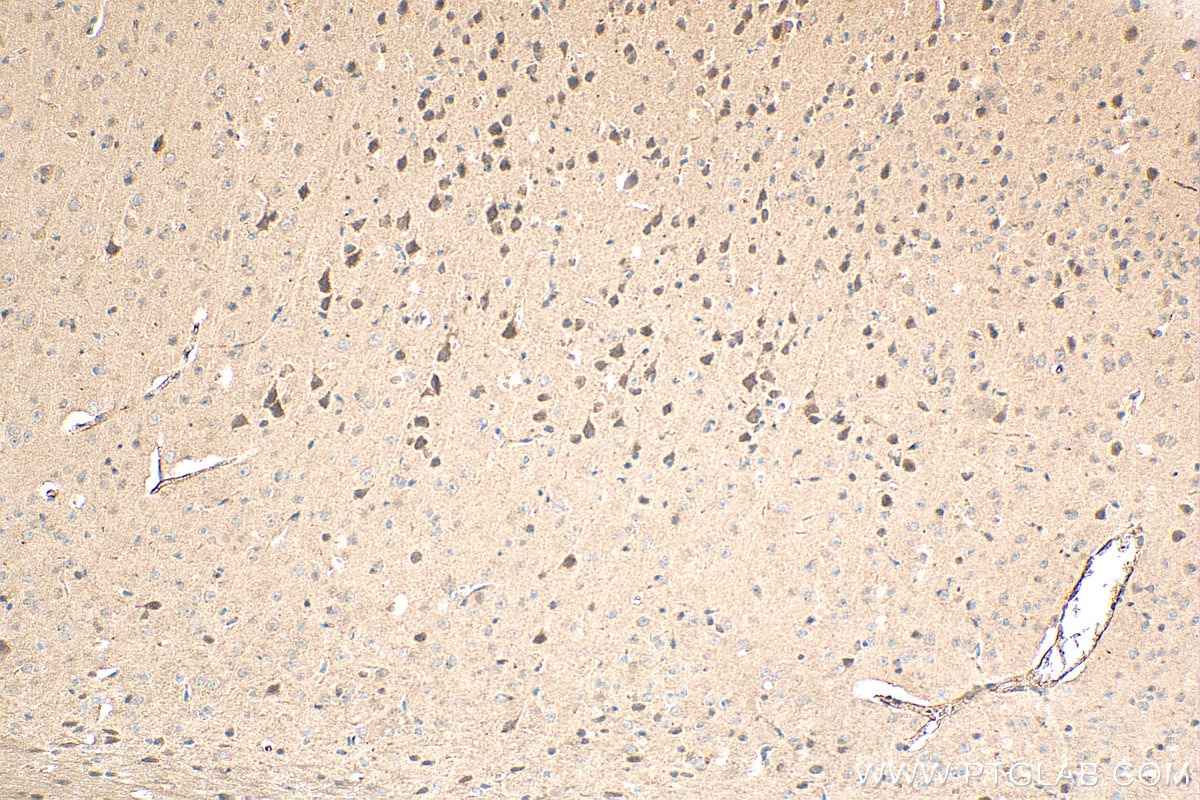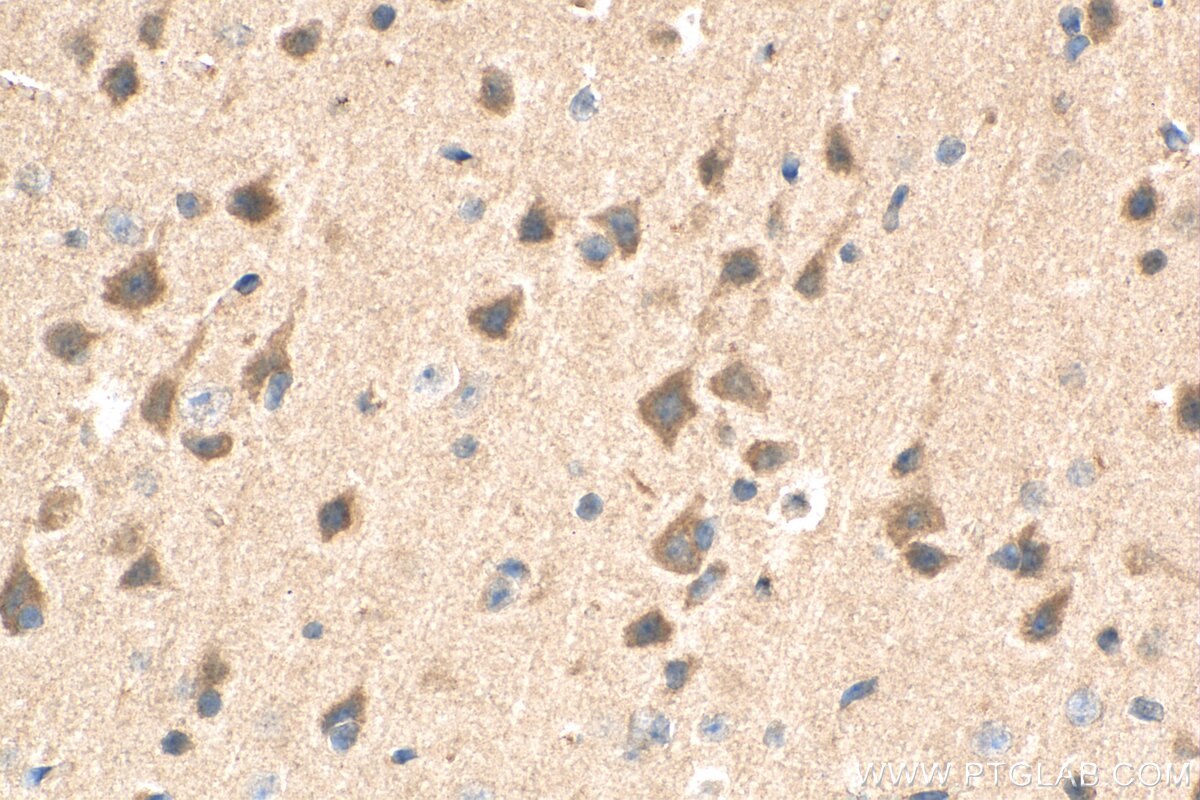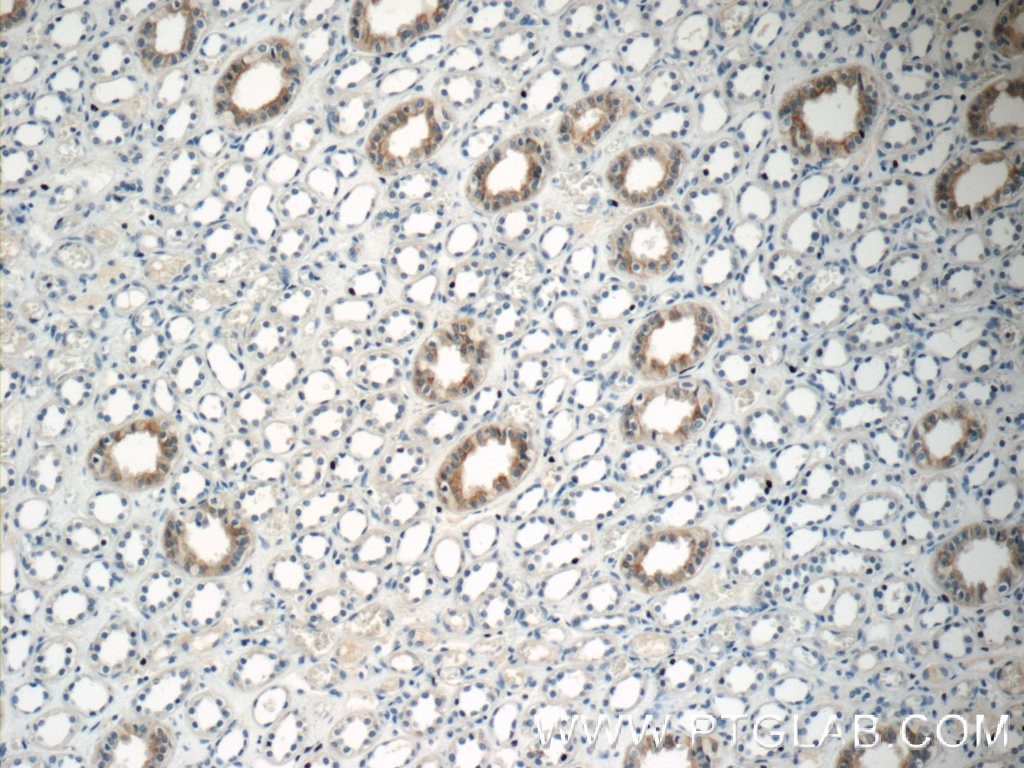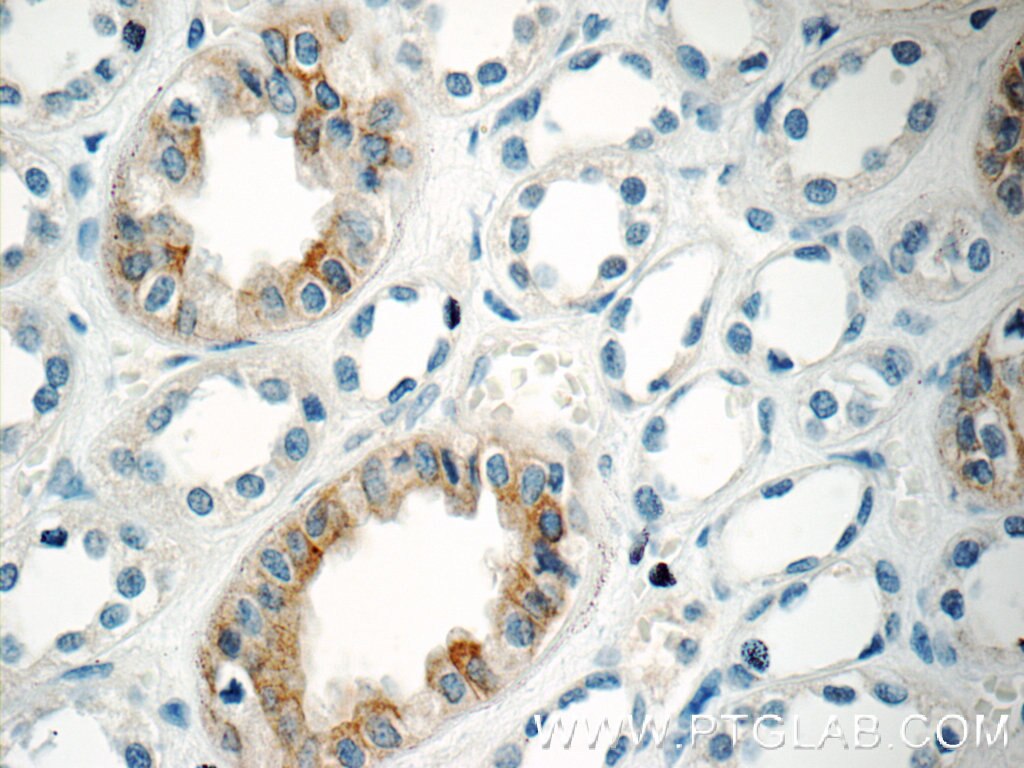Anticorps Polyclonal de lapin anti-GPR3
GPR3 Polyclonal Antibody for IHC, ELISA
Hôte / Isotype
Lapin / IgG
Réactivité testée
Humain, souris
Applications
WB, IHC, ELISA
Conjugaison
Non conjugué
N° de cat : 20847-1-AP
Synonymes
Galerie de données de validation
Applications testées
| Résultats positifs en IHC | tissu cérébral de souris, tissu rénal humain il est suggéré de démasquer l'antigène avec un tampon de TE buffer pH 9.0; (*) À défaut, 'le démasquage de l'antigène peut être 'effectué avec un tampon citrate pH 6,0. |
Dilution recommandée
| Application | Dilution |
|---|---|
| Immunohistochimie (IHC) | IHC : 1:50-1:500 |
| It is recommended that this reagent should be titrated in each testing system to obtain optimal results. | |
| Sample-dependent, check data in validation data gallery | |
Applications publiées
| WB | See 1 publications below |
| IHC | See 1 publications below |
Informations sur le produit
20847-1-AP cible GPR3 dans les applications de WB, IHC, ELISA et montre une réactivité avec des échantillons Humain, souris
| Réactivité | Humain, souris |
| Hôte / Isotype | Lapin / IgG |
| Clonalité | Polyclonal |
| Type | Anticorps |
| Immunogène | GPR3 Protéine recombinante Ag14257 |
| Nom complet | G protein-coupled receptor 3 |
| Masse moléculaire calculée | 330 aa, 35 kDa |
| Numéro d’acquisition GenBank | BC032702 |
| Symbole du gène | GPR3 |
| Identification du gène (NCBI) | 2827 |
| Conjugaison | Non conjugué |
| Forme | Liquide |
| Méthode de purification | Purification par affinité contre l'antigène |
| Tampon de stockage | PBS with 0.02% sodium azide and 50% glycerol |
| Conditions de stockage | Stocker à -20°C. Stable pendant un an après l'expédition. L'aliquotage n'est pas nécessaire pour le stockage à -20oC Les 20ul contiennent 0,1% de BSA. |
Informations générales
GPR3 (G protein-coupled receptor 3) was first cloned from a mouse cDNA library in 1993 before being cloned from human genomic libraries by several independent groups (PMID: 29941868). GPR3 mRNA is broadly expressed in neurons in various brain regions, including the cortex, thalamus, hypothalamus, amygdala, hippocampus, pituitary, and cerebellum (PMID: 22207171). Moreover, the GPR3 protein is overexpressed in neurons in post-mortem brain tissue sections from individuals afflicted by Alzheimer's disease (PMID: 19213921).
Protocole
| Product Specific Protocols | |
|---|---|
| IHC protocol for GPR3 antibody 20847-1-AP | Download protocol |
| Standard Protocols | |
|---|---|
| Click here to view our Standard Protocols |
Publications
| Species | Application | Title |
|---|---|---|
Oral Oncol The circadian clock gene, BMAL1, promotes radiosensitization in nasopharyngeal carcinoma by inhibiting the epithelial-to-mesenchymal transition via the TGF-β1/Smads/Snail1 axis |





